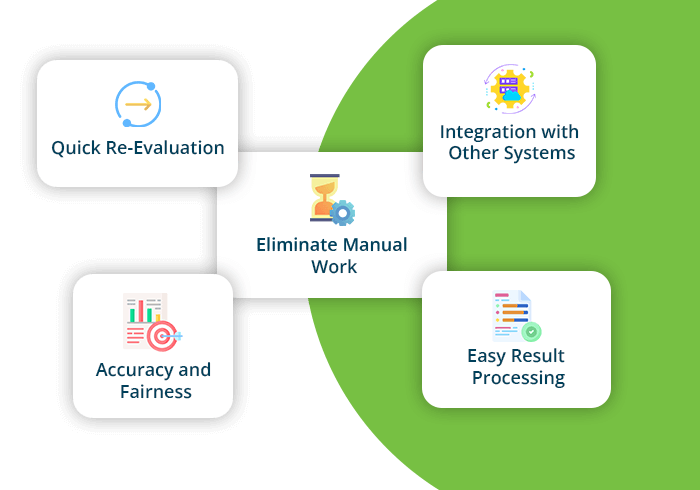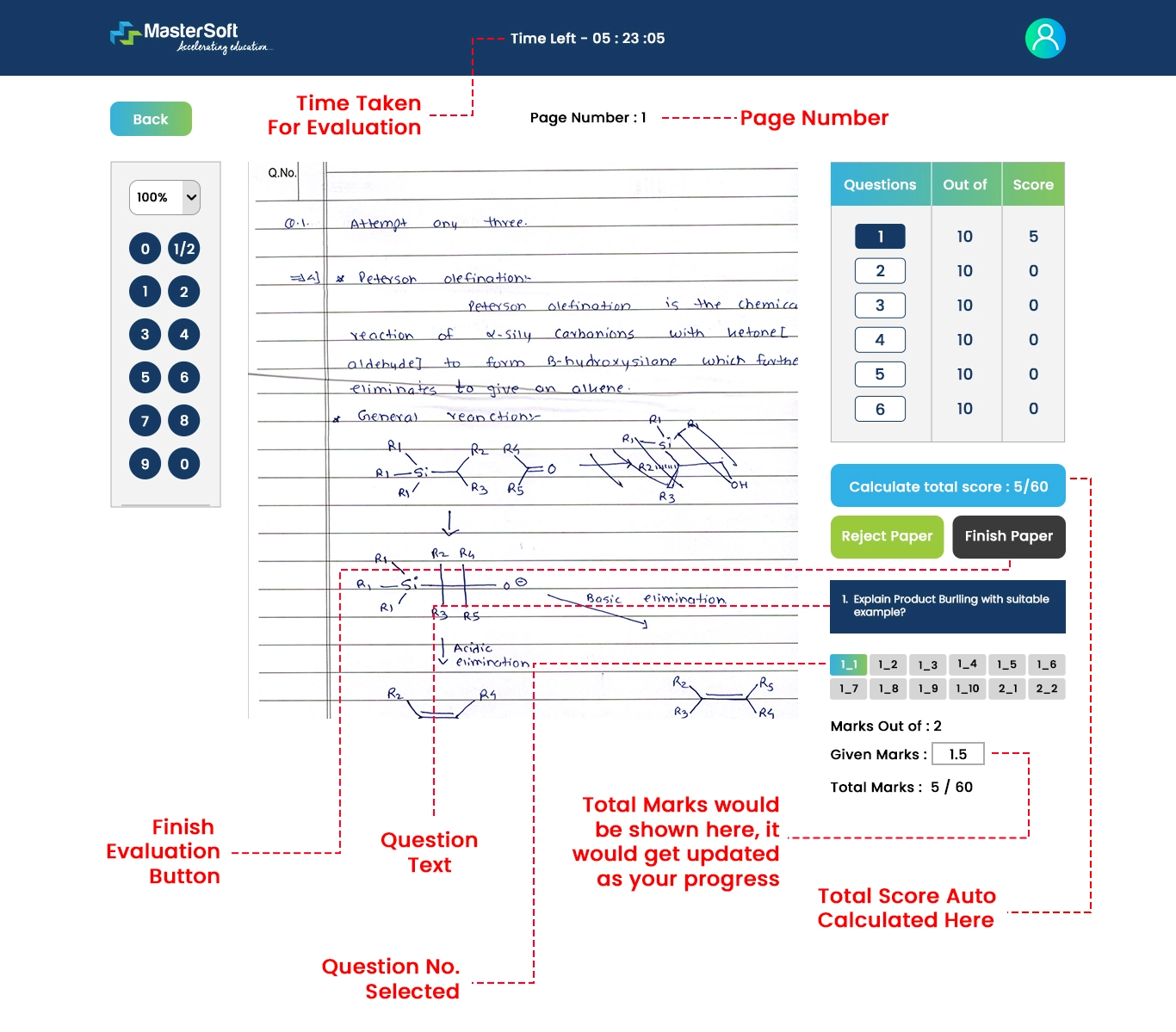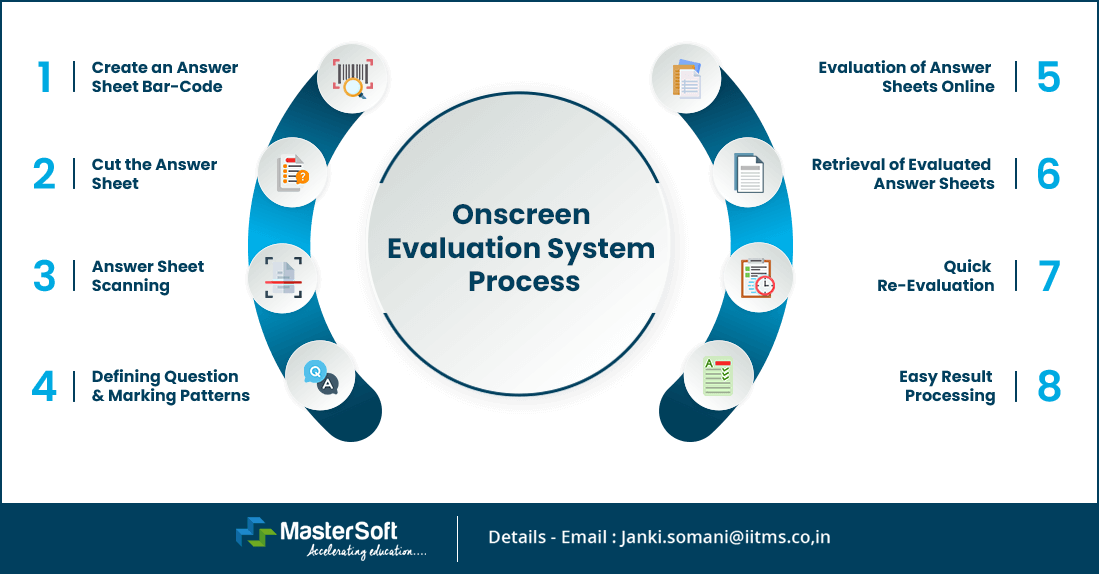
What is a Digital Evaluation System?

Digital evaluation is a process in which the examiner gets access to a student's manual exam script or online exam answers and can mark and evaluate their exam performance using online software. The system enables institutes to conduct exams remotely. It evaluates students and scores them based on their exam performance.
Also referred to as an "onscreen marking solution," it is a technique for grading a candidate's response that was written on paper and handed to the examiner to grade on a computer or laptop. By efficiently automating and streamlining the handling of physical documents, the system enables educational institutions to modernize their outdated paper-based test evaluation methods and shift to an online examination management system with a digital evaluation system.
On-screen marking (OSM) is a system that offers institutes an extensive platform for assessing pen and paper-based exams on computer screens. It completely automates the entire marking and scoring system of descriptive answers in a simplified, accurate, and efficient process.
Using a scalable and reliable exam evaluation system to assess the descriptive answer script will help educational institutions boost efficiency and lower expenses when evaluating physical examination documents.

Features of Onscreen Marking System

1 Auto Calculation of Marks
You are not required to keep track of the student's attempts at optional questions as the examiner. Based on the format of the question paper, the system automatically determines the score. The examiner checking process can be carried out from any geographical location using a secure login process.For optional responses, the algorithm takes into account the pupils' best performances.
2 Generation of Results
With automation, the system can rapidly generate mark sheets and calculate the outcome directly. There is no need to manually enter marks into the system. There is a facility to export the result in Excel format, which can be later imported. It is possible to eliminate the manual data entry task of entering marks and validating them.
3 Customization and Branding
Some answer sheet evaluation systems can allow users to customize the appearance and branding of the system to match their organization's branding guidelines. They can allow users to select from a range of question types and formats. This can make it easier to create assessments or exams that are tailored to specific learning goals or needs.
4 Integration with Other Systems
Onscreen evaluation systems can be easily integrated with other systems, such as learning management systems, student information systems, or HR systems, to allow for seamless integration with other learning or training processes. This feature can automatically upload the individual scores of students, thus making it easier for the student to access the marksheet.
Components of Digital Evaluation System

Digital or Onscreen marking systems are computer-based evaluation systems that are used to assess the performance of students via quizzes, online assessments, or exams. These systems typically include two key components:
User Interface
This is the interface that students or employees use to access the system and complete assessments or exams. It may include features such as navigation buttons, progress indicators, and question prompts.
Reporting and Analysis
This is the system that is used to generate reports and analyze the results of the assessments or exams. It can include features such as performance tracking, progress reports, and comparisons with other students.
How Does the Digital Evaluation System Work?

The digital evaluation system is designed for evaluating answer sheets on the digital platform via images of those sheets as per the question pattern settings. All the images are stored on the server in an encrypted format, and the users login through the two-step verification process. One is the user's credentials, and the other is via mobile OTP to ensure the highest level of security.









